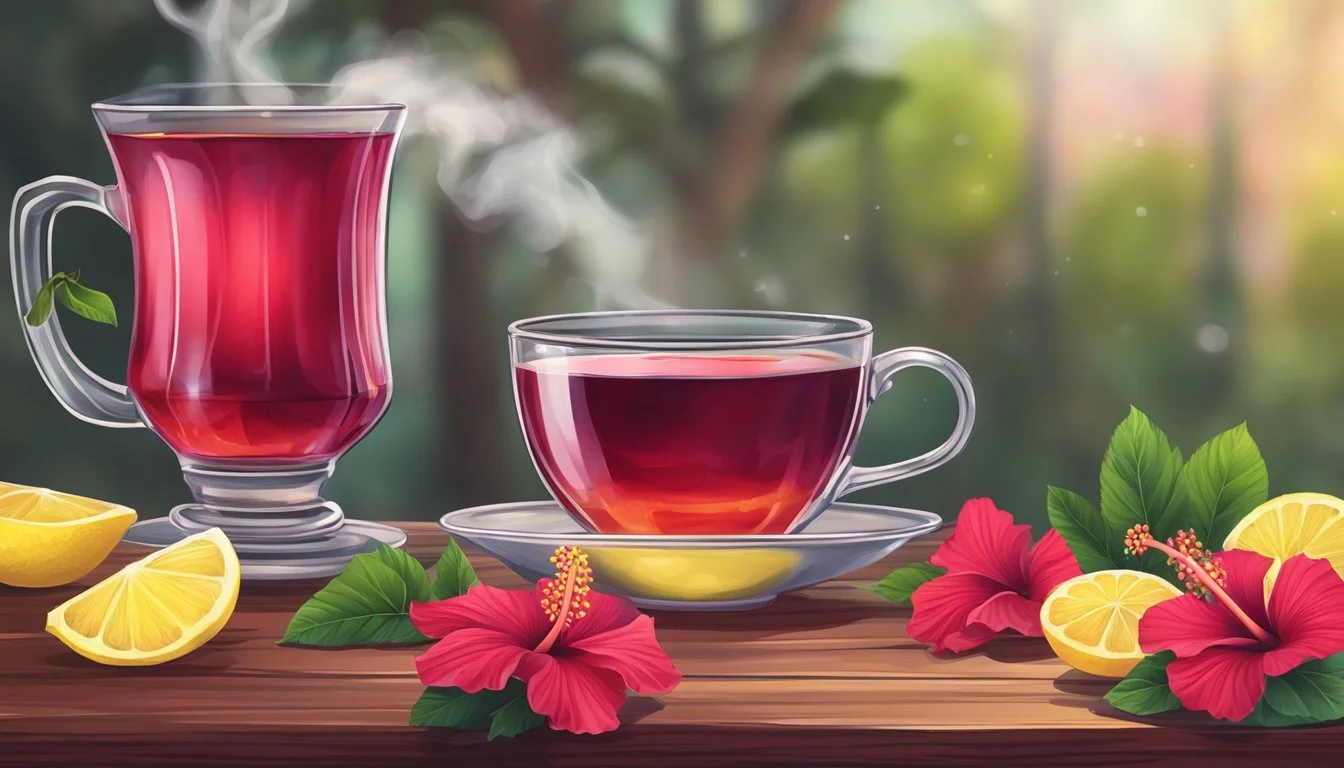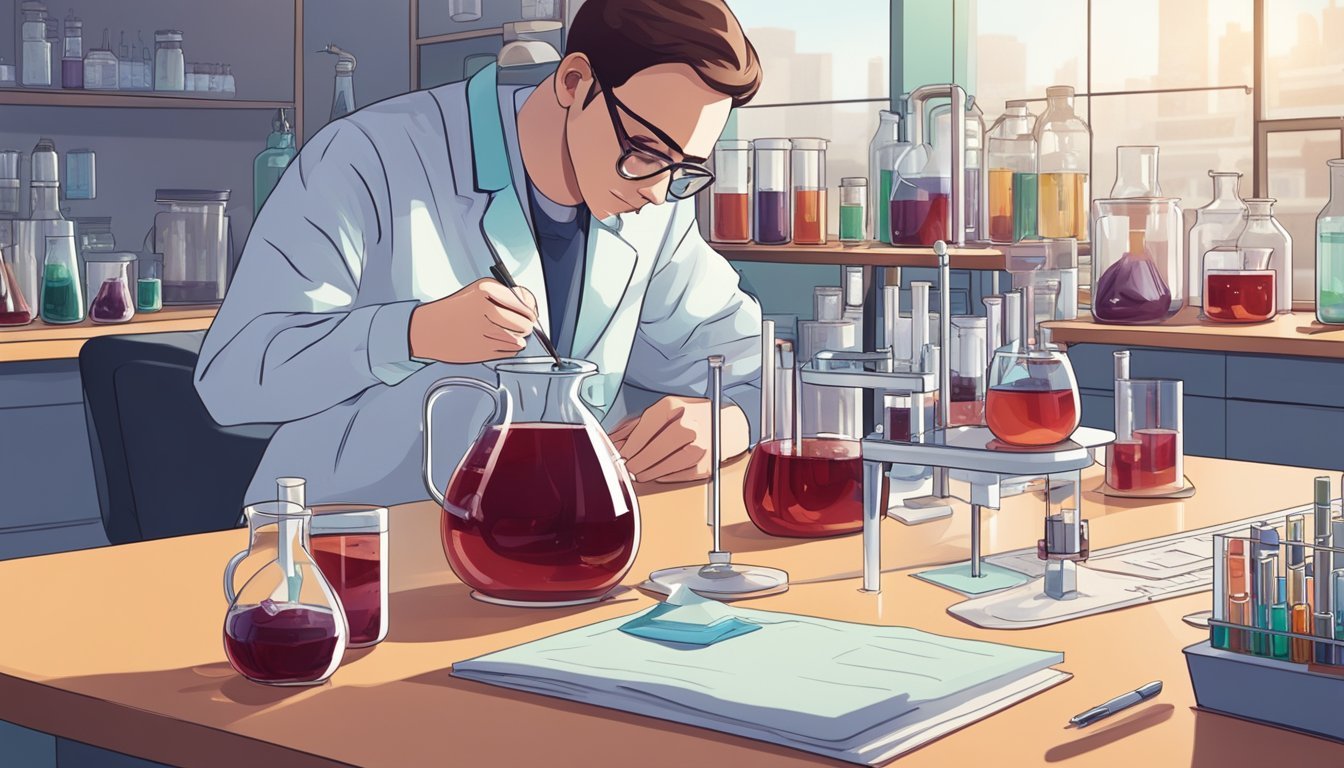How Long Does Hibiscus Tea Last?
Understanding Its Shelf Life
Hibiscus tea (how long does hibiscus tea last?) is a popular beverage enjoyed for its tart flavor and potential health benefits. It can be enjoyed hot or cold and is often brewed from the colorful calyces of the hibiscus flower. The longevity of hibiscus tea's freshness is contingent upon several factors, including the way it is prepared, stored, and the form it is kept in, whether as dry petals or as a liquid infusion.
When hibiscus tea is stored properly in a cool, dark place, dry hibiscus petals can remain fresh for about 1 to 2 years. For the tea that has already been brewed, its shelf life is considerably shorter. In the refrigerator, freshly brewed hibiscus tea can be expected to stay at its best quality for about 4 to 5 days. If the tea's appearance becomes cloudy or its color changes, it may be a sign that the tea is no longer good to drink.
For those who don't plan to drink their brewed hibiscus tea within a few days, freezing it can extend its shelf life. Frozen hibiscus tea can last for several months if kept in airtight containers. Thawing should be done in the refrigerator to maintain its quality. Regardless, it is essential to check the tea for unusual odor or flavor before consumption to ensure it is still suitable for drinking.
Understanding Hibiscus Tea
Hibiscus tea, a herbal beverage known for its vibrant color and tart flavor, is derived from the flowers of the Hibiscus sabdariffa plant. This section delves into the tea's origins, varieties, and its key components.
Origins and Types
Hibiscus tea has its roots in North Africa and Southeast Asia, where it is traditionally consumed and appreciated for its taste and potential health benefits. It is made from the Hibiscus Sabdariffa plant, known for its large, colorful flowers. Tropical and subtropical regions around the world cultivate hibiscus, and it has been adopted by various cultures, each with distinctive brewing methods and serving traditions. The beverage is commonly referred to as sour tea due to its natural tartness and is enjoyed both hot and cold.
Tropical Hibiscus: Grown in warm climates, known for its bold flavor.
Subtropical Hibiscus: Found in slightly cooler regions, often with a milder taste.
Key Components
The main component of hibiscus tea is the calyx, the part of the plant that protects and supports the flower. When dried, these calyces impart the characteristic ruby-red color and acidity that defines the tea. Hibiscus tea is naturally caffeine-free, categorizing it as an herbal tea, and it is a rich source of health-promoting compounds, including:
Antioxidants: Such as anthocyanins, which contribute to the tea's color and are known for their protective properties.
Vitamin C: An essential nutrient present in hibiscus, adding to the tea's nutritional profile.
Consuming hibiscus tea may offer benefits due to these components, influencing skin health, heart function, and blood sugar management. However, the tea's effectiveness and safety can vary depending on individual health conditions and the quantity consumed.
Health Benefits and Considerations
Hibiscus tea offers various health benefits, particularly in relation to cardiovascular health and metabolic syndrome, while it also contains antioxidants. Understanding these benefits alongside potential safety considerations and side effects is critical for consumers.
Cardiovascular Health
Hibiscus tea has been associated with positive effects on blood pressure. Regular consumption can lead to reductions in blood pressure, particularly beneficial for those with high blood pressure. However, it should be consumed with care, as it may interact with certain medications.
Weight Management
The beverage has been suggested to support weight loss and weight management. Components in hibiscus tea might help in reducing body fat accumulation, making it a potential ally against obesity.
Diabetes and Metabolic Syndrome
Individuals with diabetes may find hibiscus tea beneficial due to its effects on blood sugar regulation. Some studies imply that it can improve cholesterol levels, increasing HDL ('good' cholesterol) and decreasing LDL ('bad' cholesterol) and overall cholesterol.
Antioxidant Properties
Hibiscus tea is rich in antioxidants, which help protect the body from damage caused by free radicals. These antioxidants might also play a role in reducing inflammation and combat the growth of cancer cells.
Safety and Side Effects
Hibiscus tea is generally safe for most individuals, but there are exceptions. It is not recommended for pregnant or breastfeeding women due to potential risks. Additionally, overconsumption poses a risk of liver damage and it has diuretic properties, which may need consideration for people with certain medical conditions.
Preparation and Usage
In preparing hibiscus tea, choosing the right brewing method is essential for achieving the desired flavor and taking advantage of its caffeine-free nature. How one serves the tea greatly influences its taste, and the combination with other ingredients can enhance its refreshing qualities.
Brewing Techniques
Hot Brewed Method: To hot brew hibiscus tea, steep dried hibiscus flowers in boiling water for about 5-7 minutes. This method brings out the full tartness and deep red color of the tea.
Cold Brewed Method: For a milder flavor, one may place the dried hibiscus flowers in room temperature water and leave it to steep in the refrigerator for 24 hours. This technique yields a smoother taste and is less acidic.
Serving Recommendations
Hot Hibiscus Tea: Serve hot hibiscus tea in a clear mug to showcase its vibrant color. Add a slice of lemon to enhance its citrusy notes.
Hibiscus Iced Tea: Cool down the brewed tea and serve it over ice for a refreshing summer drink. A sprig of fresh herbs like mint can add a subtle aromatic touch.
Combining with Other Ingredients
Sweeteners: Hibiscus tea's natural tartness can be balanced with the addition of sweeteners. Sugar, honey, or stevia work well, depending on one's dietary preferences.
Flavor Enhancers: To complement the floral notes of hibiscus, infuse the tea with additional flavors like ginger or various herbs. Mix-ins should be added during the brewing process to fully integrate their flavors.
Storage and Shelf Life
The longevity of hibiscus tea, whether stored as dry leaves or brewed, is influenced by storage conditions. Proper practices can significantly extend its shelf life, maintaining quality and flavor.
Optimal Conditions
For dry hibiscus tea leaves, an airtight container is crucial to prevent exposure to air, moisture, and light. These ingredients should be kept in a cool, dry place, ideally away from direct sunlight, which can degrade the tea's quality. This method of storage can maintain the leaves' quality for several months to a year.
Signs of Spoilage
One should inspect the appearance of hibiscus tea for signs of spoilage. Discoloration, an off smell, or the presence of mold are indicators that the tea should not be consumed. Dry leaves that have lost their vibrant color or have a stale scent have likely deteriorated.
Storing Brewed Tea vs. Dry Leaves
For brewed hibiscus tea, storing it in the fridge in a sealed container is recommended. In this environment, it can last for about 5-7 days. It is best to consume refrigerated tea within this timeframe to enjoy its optimal flavor. Freezing the tea is also an option for longer preservation; however, one must ensure it's stored properly to prevent freezer burn.
Cultural Significance
Hibiscus tea is steeped in history and cultural importance that varies by region, with each area having its own name and traditional medical applications for the beverage.
Global Varieties and Names
Around the world, hibiscus tea is enjoyed under various names, reflecting its global reach and cultural integration. In the Caribbean, it's known as sorrel; in Egypt and Sudan, the drink is called karkade. Mexican culture refers to it as agua de jamaica, and in Thailand, it is consumed as a chilled treat often sweetened with sugar. Each name represents a different facet of the drink's identity in various regions of the world.
Caribbean: Sorrel
Egypt/Sudan: Karkade
Mexico: Agua de Jamaica
Thailand: Hibiscus Beverage (known locally by various names)
Traditional Uses in Medicine
Hibiscus tea's traditional medicinal uses are as colorful as its global names. Rich in anthocyanins, the tea boasts properties that have been utilized for centuries in traditional medicine. In Africa, hibiscus, or roselle, has been used to treat ailments such as high blood pressure and liver diseases. Similarly, in Mexico, agua de jamaica is believed by some to help with hypertension and cholesterol management due to its potential anthocyanin content.
High Blood Pressure Management: Common use in various cultures due to the presence of anthocyanins.
Liver Disease: Used in African countries as a herbal remedy.
Cholesterol Management: Believed to be effective in Mexico for supporting cardiovascular health.
Scientific Research and Studies
This section delves into the empirical evidence on hibiscus tea derived from recent scientific research, with a focus on health-related outcomes and the potential for future developments in this area.
Recent Findings
Recent studies have highlighted hibiscus tea's beneficial role in lowering blood pressure. An analysis involving randomized controlled trials (RCTs) provided evidence that hibiscus tea significantly reduces both systolic and diastolic blood pressure. Particularly, one study noted that consuming three cups daily resulted in a notable decrease in systolic blood pressure among prehypertensive adults.
Research has also pointed to the tea's antioxidant, anti-inflammatory, and potential anticancer properties, indicating a broad spectrum of health benefits. This is attributed to the presence of bioactive compounds, or extracts, in the hibiscus plant. The antibacterial activity of hibiscus is another area of interest, with studies suggesting its use as a supplement to enhance body immunity.
Future Outlook
The exploration of hibiscus tea within scientific studies is poised to continue, especially regarding its long-term effects on body weight and metabolic health. Researchers are particularly interested in isolating specific extracts and determining their mechanisms of action. The potential of these extracts in supplements or as food additives is an engaging prospect for future scientific studies.
The rd (recommended daily) intake of hibiscus and its precise health implications are areas that warrant further research. As more rigorous and comprehensive research is conducted, there is considerable interest in integrating hibiscus tea into dietary recommendations and therapeutic interventions, particularly for cardiovascular health.








